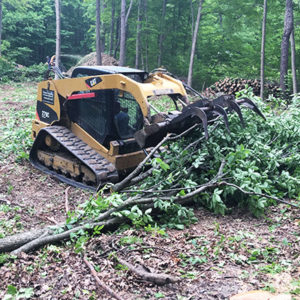The Doyle Scale may help you estimate, click here to view the Doyle Scale.
FAQ
Recycled lumber can be used for a number of home improvement projects including; flooring, mantels, beams, fencing, decking, tables, cabinetry, bar tops, desks, and much more!
A linear foot is 12″ of length regardless of width. A board foot is equivalent to one square foot of a 1″ thick board and is a volume measure. So Thickness (T”) x Width (W”) x Length (L”) divided by 144.
Green lumber has not been dried or treated. This means that it is as close to the original tree as possible.
No, our portable sawmill produces small amounts of saw dust. Our goal at Freier Forestry is to minimize waste and recycle as much of your log as possible.


We have green and kiln dried lumber available. Let us know what you need.
Conventional kilns enable wood to be dried to any moisture content regardless of weather conditions. For most large-scale drying operations conventional kiln drying are more efficient than air drying.
No. The lumber should be kept in an area that is relatively moisture free and away from the elements.
Once the timber is milled, stickered and stacked, it is placed in one of two kilns at the log yard. Each kiln holds up to 12,000 board feet of lumber. The kiln heats up to about 106 degrees and begins to pull moisture almost immediately. The dehumidification process takes about six weeks until the lumber reaches roughly 8% moisture content.
The typical drying time is 6 weeks. We have found, in our experience, drying slower causes less twisting, cupping and distortion in the material.
Kiln drying creates a more stable product to be used in fine applications such as cabinetry, flooring and heirloom quality products.
The same things that give wood character can also cause challenges with the wood while milling…An anchor was put in the tree years ago to prevent it from splitting. I found it while milling the tree…
Yes and sometimes, no. Michigan Hardwood trees possess a certain value that, like anything, is driven by demand. Certain species are worth more than others.
I strive to provide the best and honest information to the client that is going to benefit them in the end. Sometimes, the cost outweighs the return. In certain circumstances, the tree itself may hold no value in a sense of commercial value however, it may be of sentimental value to the client. Meaning: the tree was planted by a great grandparent or planted on your child’s birth. In instances like that, you cannot place a price tag on reclaiming the tree and turning it into a future lasting memory that can still live on.
A walnut tree or Oak tree in your back yard may yield 1000 board feet. Cut into firewood might get you $400. That same tree cut into lumber could yield you anywhere from 6 to 8000 dollars. Your cost to have that tree sawed into lumber and dried would be approximately $1500.00. That’s a profit of $4500 to $6500 dollars.
I do not charge for the saw blades unless I hit any type of metal in the logs. The cost of the blades are $45.00 dollars.
Before milling the clients logs, I assign a paint color to that client which I use to spray the end grain of their logs. This prevents the moisture from rapidly escaping the end grain during the drying process. This not only helps prevent end checking and splitting of the lumber, but it also helps me identify what lumber belongs to the client when it comes out of the kiln.

FF does not, however, we have a close network of people that can provide that service.






